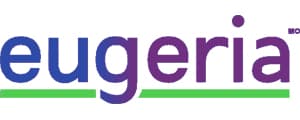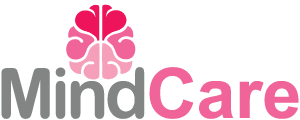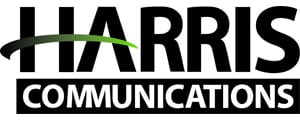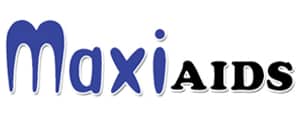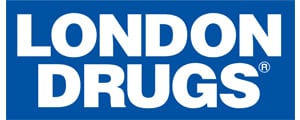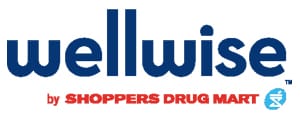Meet The Inventors: Gary Rotman of Simpl Technology On How To Go From Idea To Store Shelf
My dad was diagnosed with Alzheimer’s dementia in 2010. He suffers from multiple chronic diseases and ended up in the hospital due to medication compliance issues when my mom was out. My aha moment hit me the next morning, the instant I woke up. A voice messaging alarm clock. Why can’t I add any voice recording, have my mom reminding my dad when to take his meds, even when she is not home? Lucky for me I also had 25 years of experience embedding new technologies into timepieces. My dad, a holocaust survivor, is still hanging in there at 92!
I had the pleasure to interview Gary Rotman, Simpl Technology co-founder and COO.
Gary is a career consummate entrepreneur launching several first-to-market consumer electronics products over his 30 year career. One innovative product called the iTalk Reminder Assistant inadvertently received numerous testimonials regarding helping people remember how and when to take their medications, treatment and other everyday tasks, hearing messages in a loved-ones familiar voice. In 2013, Gary founded Life Assist Technologies Inc., educated newly named “Reminder Rosie” to healthcare professionals, caregivers and users locally and at hospitals, facilities and conferences across US and Canada and shipped overseas. Mr. Barnet, a Reminder Rosie customer, developed a relationship and together founded Simple Technology and launched a line of popular ‘age at home’ senior electronics, under the SMPL brand.
Thank you so much for doing this with us! Before we dive in, our readers would love to learn a bit more about you. Can you tell us a bit about your “childhood backstory”?
I had a happy, adventurous childhood. Tried almost every activity possible. Almost burned the house down, was knocked out running into trees, participated in lots of sports, high school wrestling and was the science fair champion. Clearly an ADHD kid (and adult).
Can you please give us your favorite “Life Lesson Quote”? Can you share how that was relevant to you in your life?
“There are more solutions than problems.” I believe that creating solutions starts with a positive attitude. Simple solutions are almost always out there, you just have to find them and not give up. Usually, it’s not so easy to get to simple, and the process can take a while. That’s why I cofounded SiMPL Technologies and launched a line of simple-to-use electronics for daily living solutions to help elders and the infirm age at home and reduce caregiver stress. This line includes a line of SiMPL music players (I developed the Radio and Music Player), home phone, universal TV remote and wandering/fall prevention local caregiver monitoring system called SiMPL Alerts — all simple solutions to everyday activities, tasks and safety in addition to Reminder Rosie.
Is there a particular book, podcast, or film that made a significant impact on you? Can you share a story or explain why it resonated with you so much?
Andy Grove’s biography talked about ‘10x change’ ideas. Certainly, lots of great ideas out there but will your’s stand the test of time? Will it replace the current solution, if any? 10x change solutions are the most impactful and lasting like snowboards, microprocessors, portable massagers, GPS, Smartphones, etc. As a budding inventor/product developer, Andy was my man. And of course, Steve Job’s relentless pursuit of perfection was right up there.
Ok super. Let’s now shift to the main part of our discussion. What was the catalyst that inspired you to invent your product? Can you share the story of your “ah ha” moment with us?
My dad was diagnosed with Alzheimer’s dementia in 2010. He suffers from multiple chronic diseases and ended up in the hospital due to medication compliance issues when my mom was out. My aha moment hit me the next morning, the instant I woke up. A voice messaging alarm clock. Why can’t I add any voice recording, have my mom reminding my dad when to take his meds, even when she is not home? Lucky for me I also had 25 years of experience embedding new technologies into timepieces. My dad, a holocaust survivor, is still hanging in there at 92!
There is no shortage of good ideas out there. Many people have good ideas all the time. But people seem to struggle in taking a good idea and translating it into an actual business. How did you overcome this challenge?
Trial and error. Determination. Experience. Positive attitude. From one launch to the next, you make fewer and fewer mistakes. And eventually you get it right. Right product at the right time with the right funding. And the right marketing. The famous 5 Ps aren’t famous enough. I really strove to deliver the best combination of the expanded version — the 7 Ps: Product, Price, Place, People and Promotion, plus Packaging and Promotion. Combined, the 7 Ps need to be significantly better than your competitors or you’re not replacing the incumbents on national store shelves. That’s one tall task for experienced inventors, and overwhelming for inexperienced inventors.
Often when people think of a new idea, they dismiss it saying someone else must have thought of it before. How would you recommend that someone go about researching whether or not their idea has already been created?
Start with intense internet searching. If you couldn’t find anything, present it to your trusted network, or people they know, and trust. Most will sign NCNDAs (Non-Circumvention
Non-Disclosure Agreements). You will be surprised how resourceful like-minded people can be.
Did you have a role model or a person who inspired you to persevere despite the hardships involved in taking the risk of selling a new product?
Yes I certainly did. A true health care expert who founded a Health Innovation Centre. I will never forget that phone call on New Year’s day, 2013 and the follow up email: “Incredibly unique in engaging the patient and caregiver/family member within a personalized platform for health improvement. Disruption. More people helping more people. Creating communities of care.” That’s enough to keep any mad scientist mad.
For the benefit of our readers, can you share the story, and outline the steps that you went through, from when you thought of the idea, until it finally landed on the store shelves? In particular we’d love to hear about how to file a patent, how to source a good manufacturer, and how to find a retailer to distribute it.
Back in 1986, I left dental school and delved into the relatively new fashion watch business. Over the years I learned all about importing, the 7 Ps of marketing, consumer electronics product development, sales agencies and retail distribution. I started building manufacturer relationships on my bi-annual trips to Hong Kong and China.
Fast forward to 2009. Right after I finally had major sleep apnea surgery, I started dreaming again. My passion for inventing and product development was back. I went overboard developing new products — smart watches (a few years too early, mind you) including, in collaboration with an overseas manufacturer and their engineering partners, the first FCC approved phone watch, if you can believe that. And I developed my third ‘talking’ timepiece — the iTalk Clock. The first two talking timepieces delivered unique experience embedding voice technologies in timepieces — the Time Telling Barney watch (helped teach young children to understand the concept of time) and a fun licensed product, the ‘Furby’ Talking Clock.
The iTalk Clock was the first talking LED clock that let you set the time and alarm completely by voice, eliminating the need to touch any buttons.
In 2010, I mentioned earlier my “aha” moment with respect to a solution to my dad’s poor medication adherence. I collaborated with local and overseas engineering development companies and we ultimately added pre-recorded voices which played back like an alarm clock instead of traditional beeping alarms. But the process was extremely grueling: five years and collectively thousands of hours of penciling flow charts (software/firmware), dozens of firmware updates due to the simultaneous development (and ongoing improvements) of chip-based voice recognition software. The product initially was called the iTalk Reminder Assistant which was re-branded to Reminder Rosie in 2013. Resellers were primarily in the Assistive Technology space which is primarily an eCommerce business including Amazon.
But the early development years were wrought with all sorts of financial issues and heartaches. My financial partner eventually financially choked several established companies including mine as a result of the credit tightening following Lehman Brothers collapse in the Fall of 2008. Being based in Canada, that took a while to trickle down. But when it hit, it was really painful.
Not until 2015 was voice recognition quality good enough to recognize most accents, voices and the toughest words and numbers to recognize such as the number ‘eight’ or the word ‘yes.’
Finally, Rosie hit a 90%+ adoption rate among caregivers/family members and actual users. Reviews and testimonials across the board were better than ever. Hundreds of great reviews, years of anecdotal evidence of how Rosie is improving medication compliance due to hearing loved one’s voice messages. Now they weren’t missing mealtimes at their senior residence, their favorite TV show and were remembering birthdays. I was re-energized big time to now take Rosie to the next level, with a great product in hand. Now I should be able to get Rosie in the homes of millions of elders and disabled especially people with multiple chronic diseases, and in turn, save healthcare systems untold millions due to reduced hospital re-admittances from poor medication adherence and even save lives.
Unfortunately, the barriers for significant market penetration were just too large, no matter how many stones I unturned, or ‘out of the box’ ideas I came up with. But there are more solutions than problems, right? The answer is still yes, I believe. But not solutions I can control. We are talking about the HomeHealth Care space.
A space where users are not purchasers. Where users are often not happy campers as they slowly lose their cognitive and dexterity abilities with aging. A space where users/caregivers/family members often expect insurance plans to pay for solutions. And if they don’t pay, patients/family members usually can’t, or won’t, lay out the funds unless a trusted healthcare professional recommends a device. That requires educating healthcare providers, a pretty large undertaking to say the least.
Health insurance plans do not generally reimburse for proactive healthcare solutions, only reactive solutions, for example, medications, wheelchairs and C-PAP machines. Rosie is considered to be a ‘cash’ product, industry talk for a ‘non-reimbursed’ healthcare product. No one I know (few exceptions) other than Phillips has successfully educated Healthcare Professionals and caregivers/family members about a new way to solve a serious Homecare issue. Phillips invested tens of millions of dollars over 10 plus years to educate and promote their first to market PERS system (Personal Emergency Response Systems (fall and can’t get up).
The timeline also coincided when Obamacare forced DME/HME (Durable Home Medical stores) to submit bids for an extremely limited number of contracts in each state to supply Medicare/Medicaid Durable Medical Equipment such as wheelchairs. As a result, our key distribution channel, thousands of independent stores, were in a tizzy for years as their business model was turned upside down.
Rosie market awareness and penetration was severely limited as a result. Thanks to a few key resellers in the assistive technology area, resellers like Harris Communications and Maxiaids, we kept hearing from happy customers. Rosie is used day in and day out now by tens of thousands of people.
Even a small but significant government-funded home health care study utilizing Rosie with poor medication compliant patients, in 2016, showed that Rosie can increase medication compliance by 80% and save hundreds of dollars in visits per patient just to be sure meds are taken properly.
In any event, even today, most caregivers/family members and certainly do not know Rosie exists.
Can you share a story about the funniest mistake you made when you were first starting? Can you tell us what lesson you learned from that?
Nothing comes to mind to be honest.
The early stages must have been challenging. Are you able to identify a “tipping point” after making your invention, when you started to see success? Did you start doing anything different? Are there takeaways or lessons that others can learn from that?
Success is a very subjective term. For me, the tipping point happened in late 2011, one of the toughest years financially. I happened to come across the reviews on our initial assistive technology reseller websites — and I was shocked to say the least. Turned out that my dad wasn’t the only one having serious issues with medication or treatment adherence. Someone I didn’t know telling me the device is a “gift from g-d” for their family and many reviews stating that their loved ones don’t forget their meds anymore is pretty encouraging, to say the least.
What are your “5 Things I Wish Someone Told Me Before I Invented My Product” and why? (Please share a story or example for each.)
- Home Health Care is an extremely tricky space — license the idea to a major company. By the time I decided to reach out to Phillips and got declined, my past successful product launches (I did sell 2 million Wrist Wrappers, remember the slap?) combined with positive response from users and professionals, and of course my insanely positive attitude, encouraged me to rise up to the challenge and keep pushing forward.
- Don’t bring to market a product that isn’t purchased by the user, other than products for kids and pets or popular gift-giving products. Boy, would that have been good to know. It took me a long time to realize that I had to sell Rosie twice to make one sale. Once to the family member/caregiver, i.e. “My dad/mom/care recipient really needs these products to help them be a bit happier/safer/healthier” sale. Secondly, “…. but will they actually use it — should I take that chance” sale.
- No matter how good the response is from customers, purchasers/end-users and even experts in the specific industry, and no matter how big a solution your product can solve, dig down very deep to understand the intricacies of the specific industry and the barriers for widespread market penetration. With respect to Rosie, I primarily marketed her as a medication management solution to help reduce the widely known $300 Billion dollar ‘avoidable’ healthcare system costs due to poor medication adherence. What I didn’t realize soon enough is that many of the purchasers/end-users expect or often require Health Plans to pay for health-related solutions. Unfortunately, at this time, Healthcare Payers are still primarily focused on reactive solutions, not proactive. As a result, growth is severely limited, no matter how good the solutions are.
- Healthcare Professionals may love your solution but educating them requires tens of millions of dollars over many, many years. Yup — they are extremely busy and often overworked, so just getting their ear is a massive undertaking. And if and when you do, don’t expect them to recommend specific products very often. That’s just not ethical.
- Be sure that your funder does what he promises, and that they won’t make their problems your problems. As an inventor/marketer, you can do (almost) everything right but good luck making triples or home runs if the funds aren’t there when you need them. My story from years back: I did everything I said I would, and the funder did not. Result? I left many more millions of dollars of sales and profits on the table for one of my products. Hit products like that are few and far between — and that money is gone forever.
Let’s imagine that a reader reading this interview has an idea for a product that they would like to invent. What are the first few steps that you would recommend that they take?
Meet with at least three experts in the field. Be prepared with a thoughtful list of key questions including what they think the chance of success is and if so, how, and what market they would target and their perspective of barriers to market. Tabulate and compare the answers to help you decide whether to go to the next step, usually development of a prototype.
Of course, everything is easier said than done but the amount of work and resources you may end up utilizing to launch can ultimately be 1000 X harder and potentially disastrous compared with pushing yourself to find experts to speak with, very early on.
There are many invention development consultants. Would you recommend that a person with a new idea hire such a consultant, or should they try to strike out on their own?
Absolutely. At least visit with a high-end consultant to review the data collected from the experts in your field. No matter what business experience you have, try to find a smarter-than-you mentor that will help for free. If you cannot, secure an ongoing higher-end consultant to help you navigate this complicated business world we live in. Always remember that there are more solutions than problems. The challenge is to find the right solutions in a timely manner.
What are your thoughts about bootstrapping vs looking for venture capital? What is the best way to decide if you should do either one?
I am a big fan of bootstrapping, however it takes a lot of people skills and experience that most people don’t have, especially these days with such tight credit. Your attitude needs to be so positive — and I mean the “I will pull this off no matter what” attitude. Realistically however, you need to have already developed a solid base of business evangelists/partners, who not only believe in your abilities to pull this off, but will actually give you the credit you need. Otherwise bootstrapping is just too difficult.
Ok. We are nearly done. Here are our final questions. How have you used your success to make the world a better place?
In the case of my most impactful invention, Reminder Rosie, the product itself is certainly helping tens of thousands of people live a bit better quality of life whether you’re the caregiver or the care recipient.
You are an inspiration to a great many people. If you could inspire a movement that would bring the most amount of good to the most amount of people, what would that be? You never know what your idea can trigger.
Lobby health payers, primarily health insurance companies, to reimburse the cost of proven, proactive, value/outcome based simple home healthcare/ADL (Activity of Daily Living) solutions for the disabled and our growing senior population. This initiative will deliver more safety, independence, dignity, and peace of mind for the care recipients and their care circle (family members/caregivers/HCPs) aging at home. I, and many of my peers, are convinced that these initiatives will save healthcare systems untold millions by helping seniors and the infirm age at home longer, have a better quality of life, reduce poor medication/treatment regimens adherence and, as a result, reduce hospital re-admittances, a huge cost burden for health systems. Furthermore, this will reduce caregiver absenteeism at work, which is impacting productivity significantly and costing the economy untold 100s of millions.
“More people helping more people. Disruption. Creating communities of care.” The expert got that right years ago. But talk is so damn cheap. It’s time for action and it’s certainly past due.
We are very blessed that some of the biggest names in Business, VC funding, Sports, and Entertainment read this column. Is there a person in the world, or in the US, with whom you would love to have a private breakfast or lunch, and why? He or she might just see this if we tag them.
A C-Suite executive at any one of the large Health Insurance companies. I would like to really understand the Health Insurers/Payers perspective with respect to reimbursing proven, proactive, age-at-home solutions.

